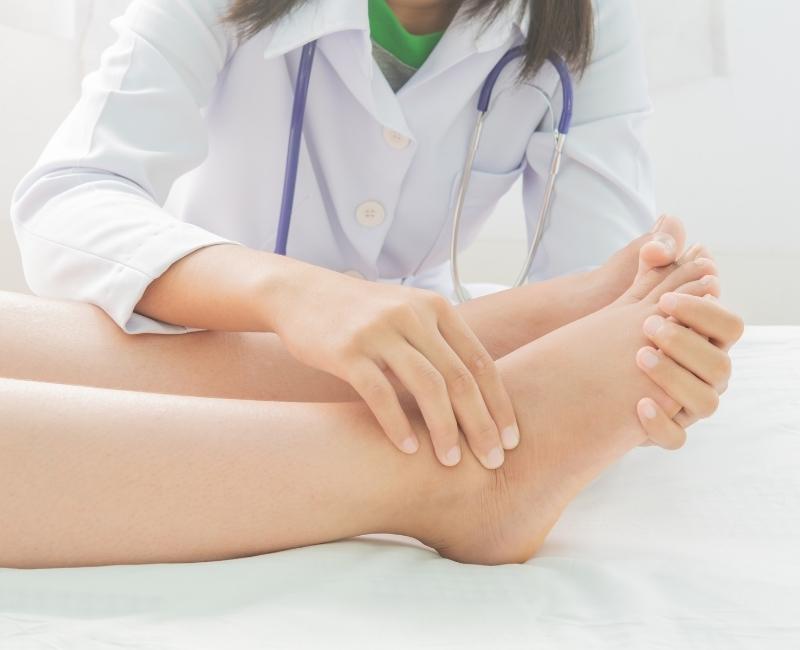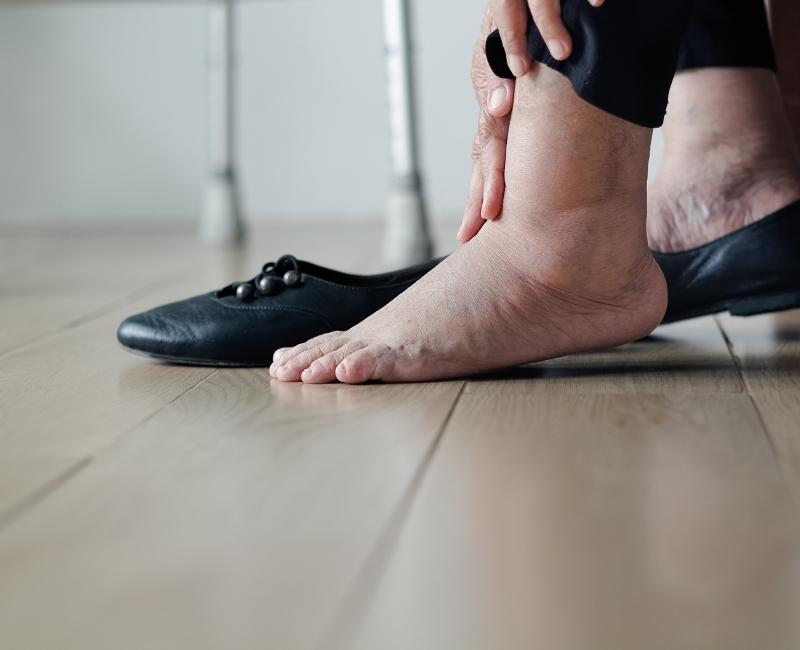Lymphedema
What is Lymphedema?
The lymphatic system collects lymph (excess fluid, proteins, and other substances) from the body tissues and carries them back to the bloodstream. Lymph is moved slowly through lymphatic vessels and is passed through the lymph nodes. Swelling (“edema”) may occur when the lymph increases in the body tissues. Lymphedema occurs when the normal drainage of fluid is disrupted by a blockage or a cut in the lymph nodes in the groin area or the armpit. Lymphedema can be a hereditary condition, but it’s most commonly the result of blockages caused by infection, cancer, and scar tissue from radiation therapy or the surgical removal of lymph nodes.

You’re at greater risk for lymphedema if you:
Had surgical removal of lymph nodes in the underarm, groin, or pelvic region
Received radiation therapy to the underarm, groin, pelvic region, or neck
Have scar tissue in the lymphatic ducts, veins, or under the collarbones caused by surgery or radiation therapy
Have cancer that has spread to the lymph nodes in the neck, chest, underarm, pelvis, or abdomen
Have tumors in the pelvis, abdomen, or chest that involve or put pressure on the lymphatic vessels and/or the large lymphatic duct thereby blocking lymph drainage
Have inflammation of the arm or leg after surgery
Are older
Have an inadequate diet or are overweight, as these conditions may delay recovery from surgery and radiation therapy and may increase the risk for lymphedema.
With lymphedema, you may have:
Swelling in your arms, legs, shoulders, hands, fingers, or chest
Skin that feels tighter, harder, or thicker than normal in the affected area
Aching or a feeling of heaviness in your arm or leg
Weakness in your arm or leg
Inability to move certain joints, such as your wrist or ankle, as freely as usual
“Pitting” in the tissues of your limb (an indentation that is made by pressing a finger on the skin that takes time to “fill in” after the pressure is removed)
Clothing, rings, bracelets, or shoes that fit tighter than before
Repeated infections in your arm or leg
Joint pain
Difficulty doing your daily activities
If you have fever and chills, and your limb with lymphedema is red, swollen, or painful, and feels warm to the touch, you may have an infection.

How Is It Diagnosed?
Your physical therapist will review your medical history and medications and perform a thorough physical examination that includes the following information:
Your actual weight compared with your ideal weight
Measurements of your arms and legs
How well you’re able to do activities of daily living
History of edema, previous radiation therapy, or surgery
The time between surgery and when you first noticed the swelling
Other conditions such as diabetes, high blood pressure, kidney disease, heart disease, or phlebitis (inflammation of the veins)
How Can a Physical Therapist Help?
Your physical therapist will serve as an important member of your health care team and will work closely with you to design a treatment program to help control the swelling and meet your goals for returning to your activities.
In the early stages of lymphedema, when the swelling is mild, it can often be managed by compression garments, exercise, and elevation of the affected limb to encourage lymph flow. For more severe swelling, the physical therapist may use a treatment called “complete decongestive therapy.” The initial step often includes manual lymphatic drainage, which feels like a light form of massage and helps improve the flow of lymph from your arm or leg. This is followed by compression bandaging that helps to reduce the swelling. Your therapist will carefully monitor the size of the limb throughout your treatment sessions.
Once the limb has decreased to the desired size, your physical therapist will help you begin to take over your own care by:
Developing a safe and sensible exercise program that will increase your physical fitness without unnecessarily straining your affected arm or leg
Updating your compression garments to ensure proper fitting, working with you to find the type of garment that best meets your needs
Educating you about proper diet to decrease fluid buildup in your tissues and skincare to reduce the risk of infection
Can this Injury or Condition be Prevented?
Some risks, such as treatment for cancer, can’t be avoided. If you’ve had radiation therapy, or your lymph nodes have been removed but you don’t have lymphedema, your physical therapist will help you identify and manage the risks that you can control to avoid it.
Your physical therapist will:
Design a safe and sensible home exercise program to improve your overall fitness and help you avoid the weight gain that can increase your risk of lymphedema
Develop a safe and sensible exercise program that will avoid straining the affected limb and help you reduce the risk of developing lymphedema following surgery or infection
Periodically assess the size of your limb and, if there is an increase in limb size, providing conservative, early intervention to help prevent the swelling from getting worse
Help you maintain good skincare and hygiene
Poor drainage of the lymphatic system might make your arm or leg more susceptible to infection, and even a small infection could lead to serious lymphedema. You can help prevent lymphedema by avoiding cuts and abrasions, needle sticks and blood draws, burns, and insect bites on the affected limb.

